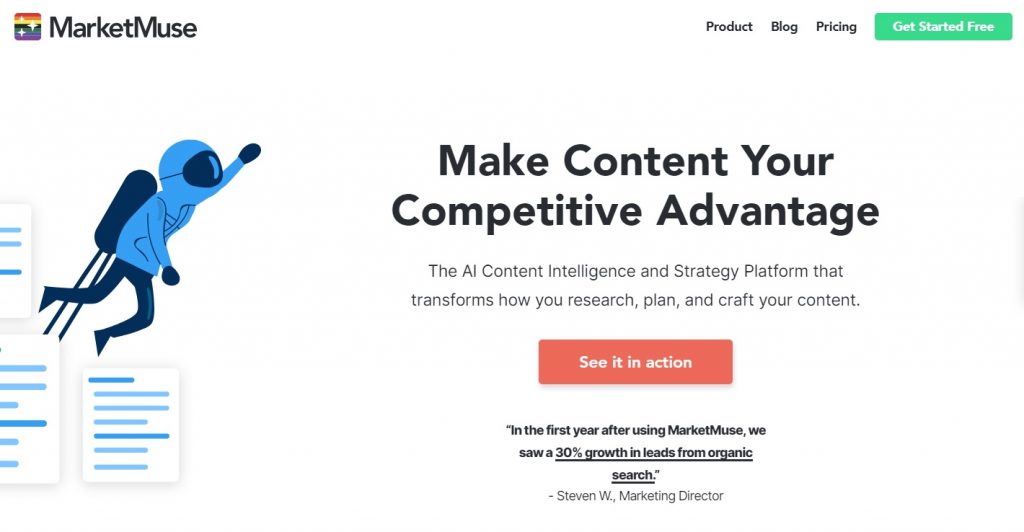Demand Generation + Marketing Automation = Success in 2020
You’re dangling your content out before the masses hoping that someone is going to take a bite. Pushing those prospects into the sales funnel can be a long and arduous process, and much of your effort leads to absolutely nothing.
Quick Links
Uplifting, I know…
But there are steps that you can take to maximize your chances, sweetening the pot and showing your audience the value and need for your product or service.
It all boils down to two factors:
- Demand Generation
- Marketing Automation
Demand generation is the art of coaxing prospective customers to learn more about your business. You’re essentially instilling a curiosity and desire in them, which pushes them into the marketing funnel. Any activity that drives brand awareness or interest can be considered demand generation.
Marketing automation is using software and artificial intelligence to automate simple or repetitive tasks pertaining to your marketing strategy. By trusting in marketing automation, businesses are able to focus their attention on more complicated matters.
This article will provide you with several ways that you can pair demand generation and marketing automation together to create a more efficient and profitable marketing strategy.
Create Content
If you’re going to succeed as a modern business, you’re going to need content.
Helpful blog posts are an excellent way of drumming up interest or demand generation for your audience. You have to understand the pain points of your most common customers and create content that shows them how your product or service is able to alleviate those pains.
Think of your blog as a gateway. Potential customers find it while looking for ways to relieve the pain points that they have. Inside, they discover a wealth of actionable information that adds value to their lives. You then make note of how your product or service can help.
Interest has been generated, and many will then look further into your website to learn more.
Make sure that you’re creating a wealth of interlinked content, with all your pieces of content connected to one another through a content library.
SleepJunkie does this well, as you can see above in the image showing off their content library. All content is organized into a series of categories, making it easier to find relevant articles that speak to each individual user.
There are also a great many ways that automation can aid in your efforts to generate demand through content. Mostly, marketing automation tools allow you to churn out content faster, which means you’re getting more optimized information out to the masses in a shorter period of time.
That content library can be built much faster when working with automation software.
Take Wordable as a prime example of an automation tool that helps you create content.
If you’re trying to post new content, two of the most convenient tools to use are WordPress, the world’s most popular CMS, and Google Docs, a Cloud-based free collaborative writing tool.
Unfortunately, when you try to paste content from Google Docs into WordPress, the formatting can be off. That means, typically, you have to adjust the site’s code manually in order to post the content.
But Wordable automatically adjusts the code for you and allows you to import directly from Google Docs into WordPress.
This is just one of the many time saving measures automation can bring to the content creation table.
Get That Content To Your Audience
Once you’ve created your content, it’s time to make sure that it can get in front of your audience.
There are many ways to do this, the first of which is Search Engine Optimization. You want to make sure that when your audience searches for high volume relevant keywords that speak to their pain points, they find your content.
That means you’re going to have to do a ton of keyword research.
“Keyword research is the process of finding valuable keywords that potential competitors are searching for,” according to the SEO experts at Loganix. “It’s a must-do report for every local SEO campaign.”
You have to identify the keywords that people are searching for. When you are one of the top results for those words or terms, you’re going to attract more eyes. If your content is good, demand will be generated and interest will push those potential customers into your marketing funnel.
There are a number of automation platforms that can help you find the right keywords. First off, you have Google’s Keyword Planner tool, which is a free tool on the Google Ads platform. Then, on the other side of the coin, a premium service such as MarketMuse can find keywords while also analyzing your competitors and scoring your content.

You could also generate demand by reaching out to your ideal customers directly. This can be done via email marketing. Of course, you can use automation to help with this as well.
Email finders are automated tools that allow you to find the email addresses of your customers so that you can send them content directly that could generate interest in your services.
Use Social Media
Social media can be a powerful tool in modern marketing.
That’s mostly because the eyes of the entire world are already upon it, for better or worse.
Make use of Facebook, Twitter, Instagram, Tik Tok, etc to get your message out there. You can use tools like Hootsuite to automate your posts, setting them up and scheduling them for a time in which you know your audience is likely scrolling.
You can also keep track of when you want to post your content by using a calendar analytics tool.
When you communicate via social media, it’s important that you know how to speak the language.
Of course, we’re not talking about English or Spanish here. We’re talking about writing naturally on social media in the same tone as your audience.
Make sure that you’re using some of this year’s most common internet abbreviations in your posts and tweets.
That will make your content more relatable and help your audience connect with you enough to want to learn more.
Organize Your Digital Assets
You need to use digital assets in your content.
By this, I mean logos, videos, images, documents, audio files, and so on.
If you can organize and keep track of these assets, you can pull them out when needed without having to spend time searching or re-creating something you already have.
There are automation tools for this as well. FileCamp for instance can keep track of your digital assets on the cloud, allowing you to store, find, and share anything in your library at a moment’s notice.
By understanding the kind of imagery and content that appeals to your audience, you can create more strategic posts that will generate demand and initiate the marketing funnel.
In Conclusion
If you want to make sales and gain new customers, you first have to spark interest in your audience.
By trusting in automation tools to assist with demand generation, you’re on the right track to creating a buzz around your company that will push prospects into the marketing funnel, creating loyal customers that will stick around for years.
What Is WooCommerce Product Slider and Why Your Store Needs It
Why Do Product Images Matter So Much in Online Stores? When someone visits an online store the…
0 Comments9 Minutes
How to Streamline Your Customers’ Shopping Experience?
The goal for any online store is to make shopping as smooth as possible. When visitors move…
0 Comments8 Minutes
Strengthening Brand-Customer Relationships Through Gamified Loyalty Programs
Creating lasting connections with customers has become increasingly vital as the marketplace grows…
0 Comments6 Minutes
How to Use SEO and SEA Together in Search Engine Marketing
In digital marketing, search engine marketing (SEM) plays a critical role in improving online…
0 Comments10 Minutes
Content Marketing Growth Hacks: Real Shortcuts to Drive Traffic
Are you still lagging in content marketing? Sticking to these old strategies seems…
0 Comments10 Minutes
How to Build a Strong Local Following Using Social Media Marketing
In the days of likes, shares, and stories, local businesses have a golden opportunity to create…
0 Comments9 Minutes
Why WooCommerce is the Best Choice for Your Online Store?
WooCommerce stands out as a top option for anyone looking to build an online store. This platform…
0 Comments8 Minutes
How to Use AI-Powered SEO Tools for WordPress eCommerce
SEO is a critical factor in the success of any e-commerce WordPress store. As competition…
0 Comments11 Minutes








